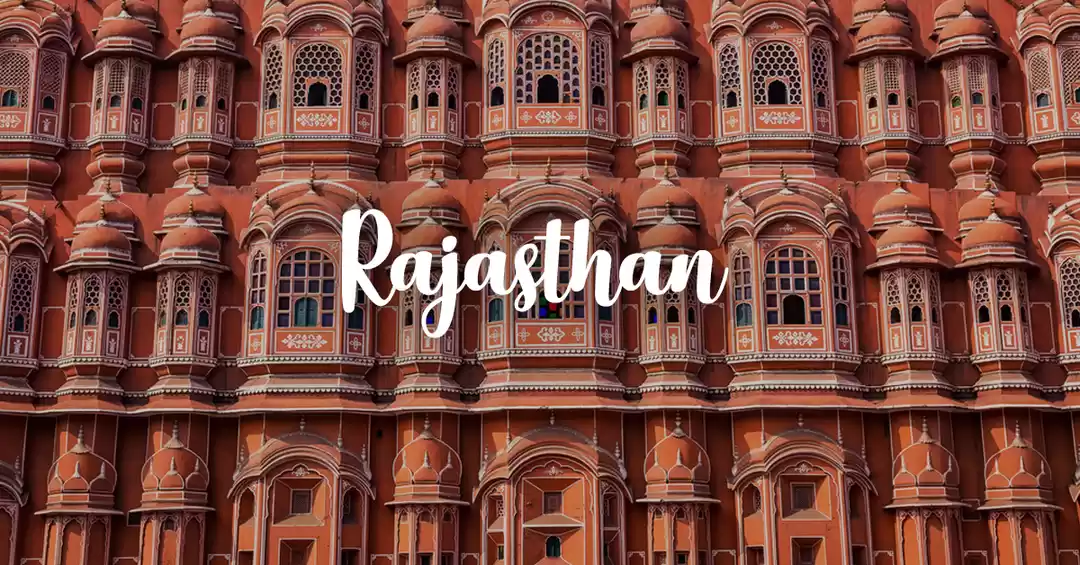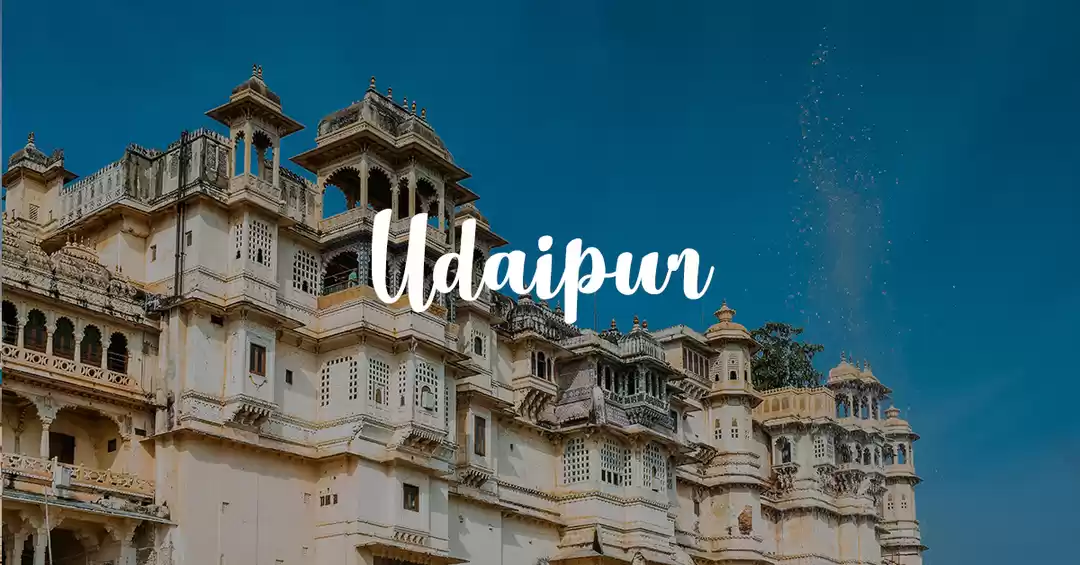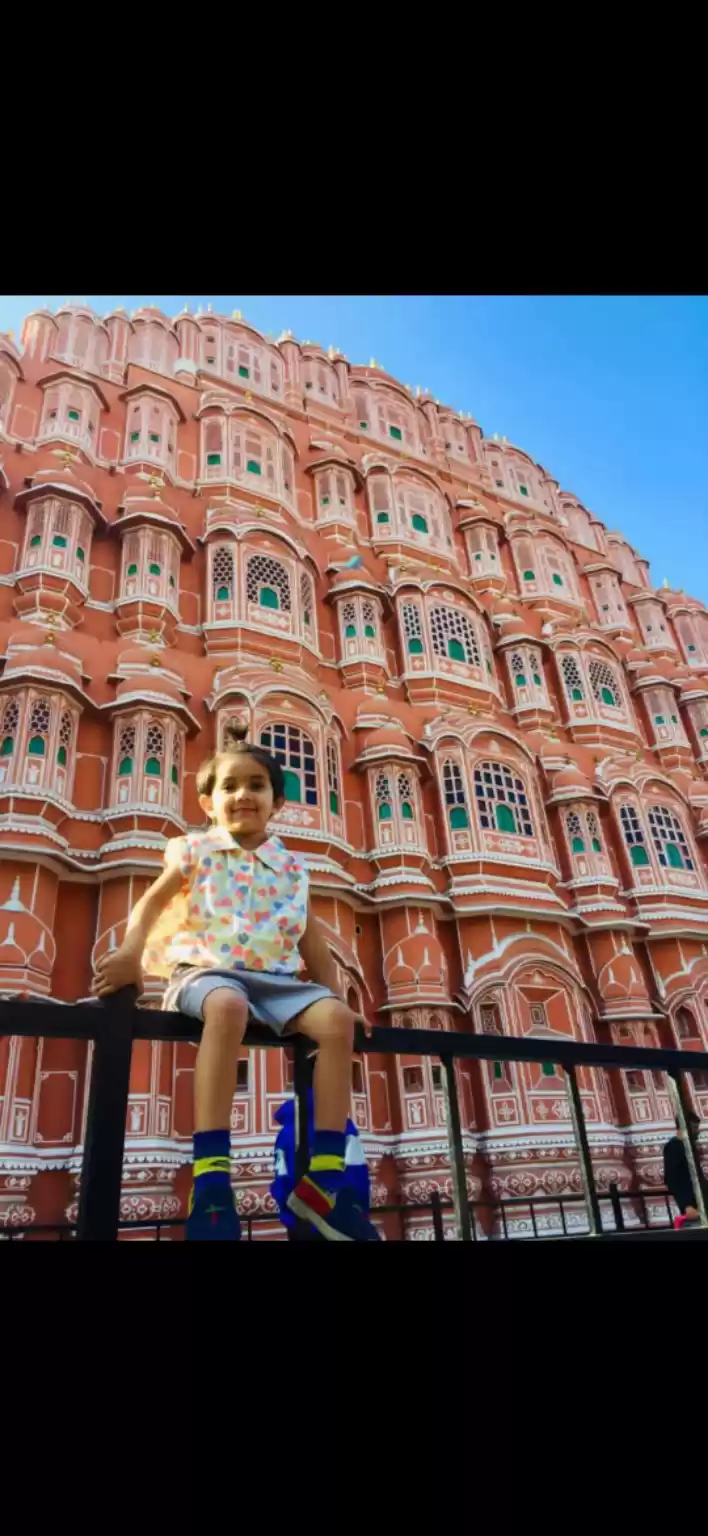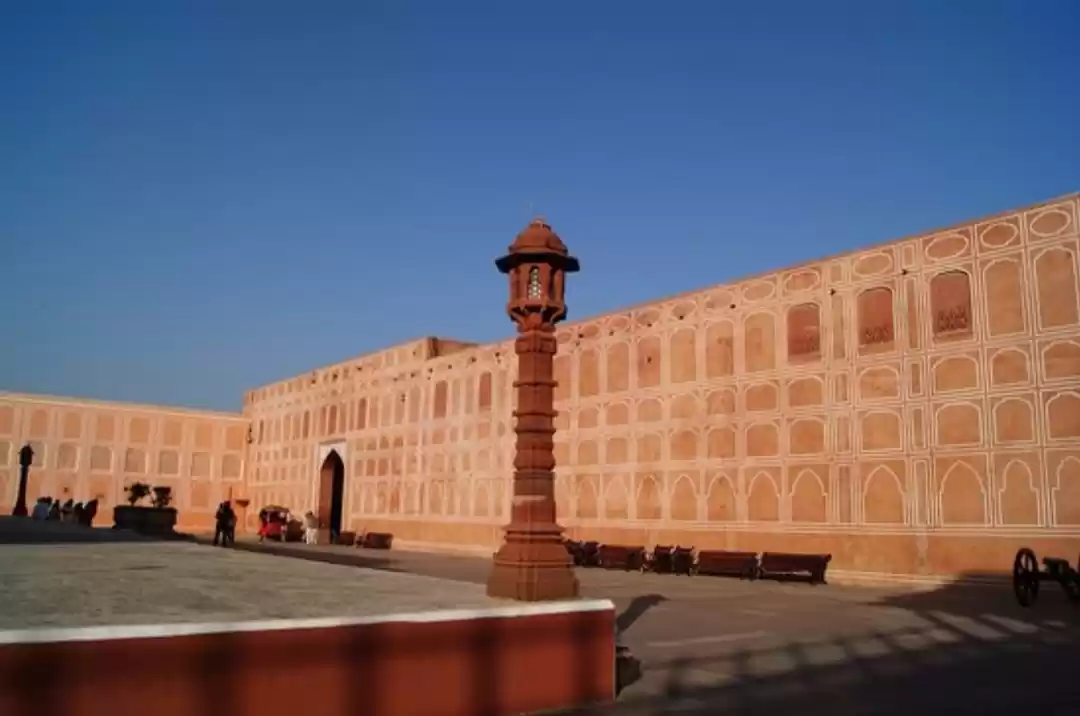Prologue
Rajasthan is undisputedly the most colourful and flamboyant state in India. Its splendid architecture, impressive cuisine, mesmerizing festivals complemented well by the raw natural beauty make it a destination worth visiting. If there is just one state you want to travel to in India, Rajasthan would make for a compelling choice. And commonly regarded as the gateway to this magnificent state is its capital city, Jaipur.
Jaipur is famous for being India’s ‘Pink City’. It was founded in 1727 by Maharaja Sawai Jai Singh II and holds the distinction for being the first planned city of India. The King took great interest while designing the city and consulted several books on architecture and architects before making its blueprint. Jai Singh sought advice from a Bengali Scholar Vidyadhar Bhattacharya, who was a ‘Shaspati’ (Hindu Priest architect) to aid in the design of the city’s architecture. It took around 4 years to complete the city’s major palaces and roads. Jaipur is an amazing example of Hindu architecture and is inspired by the ‘Pithapada’ which is a nine part mandala with nine representing the planets in our solar system. The city consists of nine large squares with the central square assigned to the royal City Palace. Maharaja Sawai Jai Singh was himself a great astronomer and a town planner and significantly used the number 9 and its multiples in planning the city. The city was divided into nine blocks, out of which two consisted of the state buildings and palaces while the remaining blocks were allotted to the public.

Why is Jaipur Pink?
The story goes that the Prince of Wales, Albert Edward and Queen Victoria had announced their visit to India in 1876. Pink is regarded as a colour of hospitality and the then Maharaja Ram Singh of Jaipur had the entire city painted pink to welcome the royal guests. Lord Albert described Jaipur as the ‘Pink City’ and thus the name came into existence. However, even without the paint job withstanding, palaces in Jaipur were constructed from sandstone that carries the terracotta pink hue. The Maharaja’s wife adored the pink colour and later convinced him to pass a law against painting the buildings in Jaipur in any other colour. The law was passed in 1877 and continues to stay even today. Every Diwali the city undergoes a paint job by the Chief Minister’s order, which is why the city has managed to maintain its pink charm more than a century later as well.
Arrival into Jaipur
I reached Jaipur from Bikaner around 1pm. I had stayed in Bikaner for a night and it was supposed to be just a rest stop on the way from Jaisalmer, considering the distance between Jaipur and Jaisalmer is a massive 600km. The city although organized like a grid, felt like a maze amidst all the chaos. Having spent around 10 days in Rajasthan, I assumed I had gotten a hang of the mess that its streets are, but I was wrong. Pedestrians who seemed like a mixture from every corner of the world weaved through the boulevards and markets, amidst the processions of motorcycles, auto-rickshaws and cars, against the backdrop of the beautiful terracotta constructions. Oh and if all that wasn’t enough, I saw a bunch of elephants casually going about their work while being surrounded by mayhem.
I had booked my accommodation in the prime area of the old city with a couple of major attractions at a walking distance.
Accommodation: FabHotel Jasoda Heritage (INR 2000 for 2 nights)
This was the first time I had booked myself into a hotel and not a homestay/guest house during the entire trip. In all honesty, I was mentally fatigued by the time I reached Jaipur courtesy of the duration of the trip and the dense itinerary and desperately needed some luxury. The hotel was surprisingly cheap for what it provided and thankfully the manager offered me a free upgrade to a premium room. Perks for being a solo rider on a journey!
Tour Day 1
Jaipur is the largest city in Rajasthan and by an extension of it, has immense number of tourist attractions. However, I had limited myself to a select few mainly located around the hotel region and instead had decided to spend more time just exploring the streets, in an attempt to hone my photography skills.

I set out late in the afternoon towards the City Palace. The palace located at the heart of the old city continues to house the royal family. It was barely a 10 min walk from the hotel and the weather was pleasant enough to allow me to ditch my motorcycle. I had been to Jaipur in my childhood and yet had no memories of visiting the palace. The major part of the palace has now been converted into a museum named after Maharaja Sawai Man Singh. I expected it to be as grand as the one in Udaipur but I was disappointed after reaching the entrance. I can’t really comment on how splendid the palace indeed is as I couldn’t explore it in its entirety, due to the exorbitantly priced entry ticket. There are two options: standard ticket worth INR 200 and royal ticket worth INR 3000.


The royal ticket allows access to Chandra Mahal, which is the royal residence whereas the standard ticket allows you to explore the palace complex and museum. Photography is prohibited inside the museum. All the stunning photographs you see on Instagram tagging Jaipur’s City Palace are clicked inside Chandra Mahal. The Palace Museum although beautiful, felt pale in comparision to its counterparts in other cities I had visited. I would highly recommend buying the Royal ticket if you can afford it. The ticket includes a guided tour of Chandra Mahal and complementary drinks and snacks.
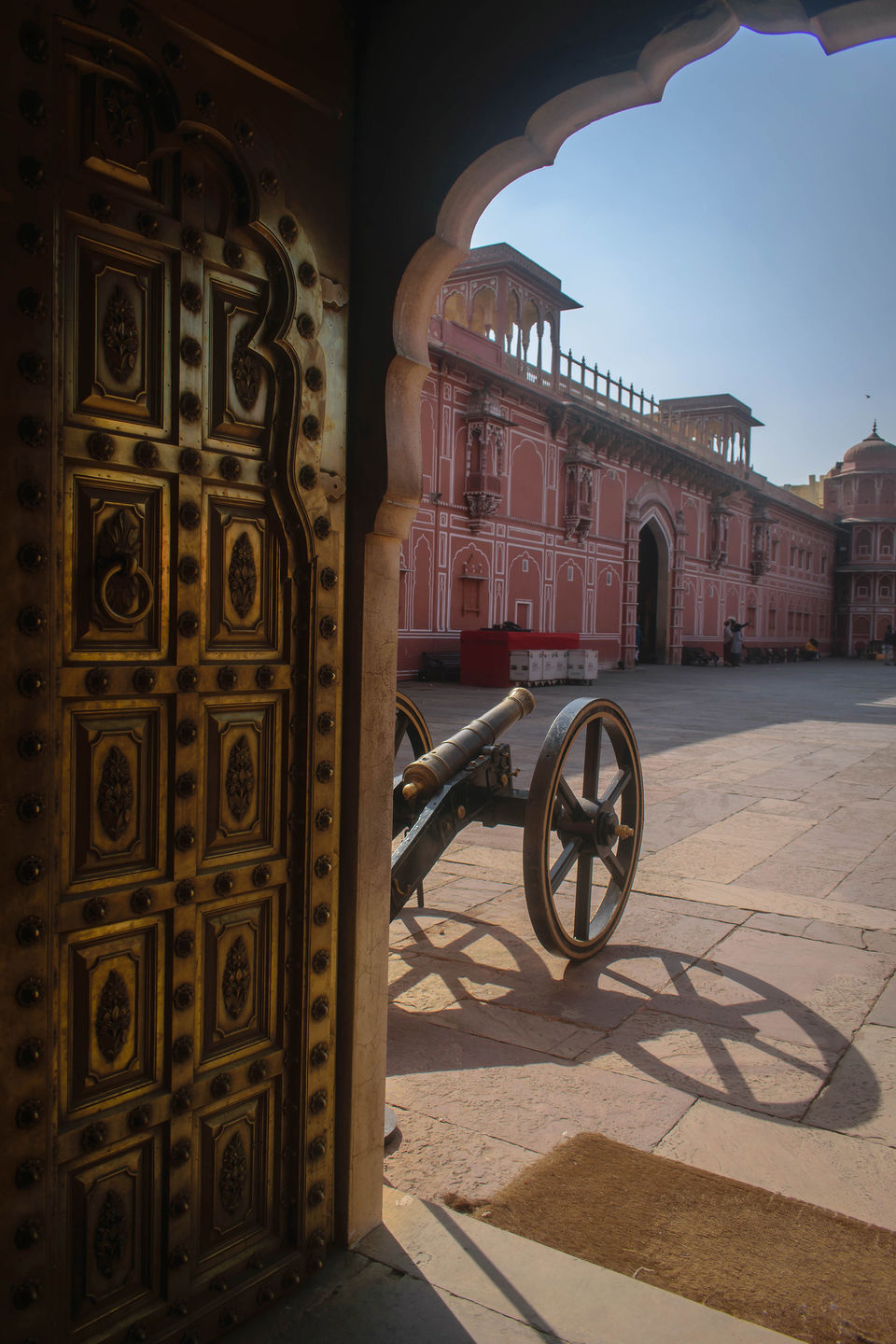

Later, I headed towards the most iconic place in Jaipur; Hawa Mahal. The palace of windows, is situated close to the City Palace, bang on the side of a busy street overlooking the bazaar below and is very easy to miss if you whizz through the traffic, in spite of its size. The entrance ticket to the Mahal is a meagre INR 50 and photography is prohibited inside. However, I noticed tourists flouting the rule openly and with regularity and decided to follow suit. The Mahal is nothing spectacular on the inside and its beauty is best appreciated from the streets.


The best time to visit Hawa Mahal, if you are more interested in photographing its exteriors, is early morning post sunrise. The morning sun casts its light directly on the terracotta walls of the Mahal and brings it to life. Also its location being on a busy street provides an excellent opportunity to engage in some street photography with the Mahal as the backdrop.
In the evening, I set out on a stroll in the market area around my hotel. There were a couple of shops selling the typical Rajasthani street food as I ventured on a food-walk. I was pleasantly surprised by the ‘Kulhad Lassi’, as the name suggests is served in a Kulhad or a clay cup. Throughout my entire Rajasthan trip, I had been craving for some delicious Lassi and finally Jaipur had managed to deliver it. ‘Mawa Kachoris’ were equally delicious but coupled with Lassi ended becoming too sugary for my liking. For dinner, I had ‘Dal Bati Churma’ and ‘Gatte ki Sabji’ at a street restaurant. There’s just one word to describe the food: Spicy! as I was left scrambling for water. I returned back to the hotel hoping my stomach would be able to cope with all the beating it had sustained through the evening.
Tour Day 2
After a heavy breakfast at the hotel, I left around 8:30am for Amber Fort. The fort is situated about 12km from the City Palace, north of the city. On the way to the fort is the famous Jal Mahal, a palace that is built on water. However, aside the astonishment you feel seeing the palace float on water, there wasn’t anything special about it. It probably had something to do with the fact that I was viewing the palace with the sun in only the backdrop, meaning the palace had no natural illumination.
Opposite to the Jal Mahal at the Urban Haat, is the Dastkar Bazaar similar to the one in Delhi. Artists from all over India showcase their art and craftsmanship. It is open between 11am and 9pm every day except Wednesday.

I had postponed my dedicated visit to the Jal Mahal until evening and headed straight towards the fort. Once a Rajput palace, the sand coloured walls of the fort disguise themselves well with the surrounding hills. Early morning is definitely the best time to visit the fort as it glitters under the golden light. Moreover, the tourists are at their minimum during this time of the day. This UNESCO World Heritage Site was the original capital of the Kachhwaha clan of Rajputs before Maharaja Jai Singh II relocated during his reign to the City Palace of Jaipur.


The fort is located atop a hill and involves a small climb up to reach the entrance. However, you can hop on the back of an elephant and the majestic animal lumbers up the stone walkaway to the fort’s main entrance, while you rock back and forth inside the ‘Howdah’. Rajput kings considered their elephants a symbol of power. These animals have long been revered by locals and are often decorated with paints, fabrics and jewels. I am not completely sure though how well looked after these elephants are. I chose to avoid the ride and instead climbed up the stairs. This also provided me with a great opportunity to indulge in some photography as I explored the complex at my own pace.

The entrance ticket to the Fort is INR 50 and there is an audio guide available for solo travellers like me. I expected to be done with the tour within an hour or so but ended up spending approximately 3 hours inside the fort. The fort is massive on the inside and is a visual treat for anyone who appreciates history.
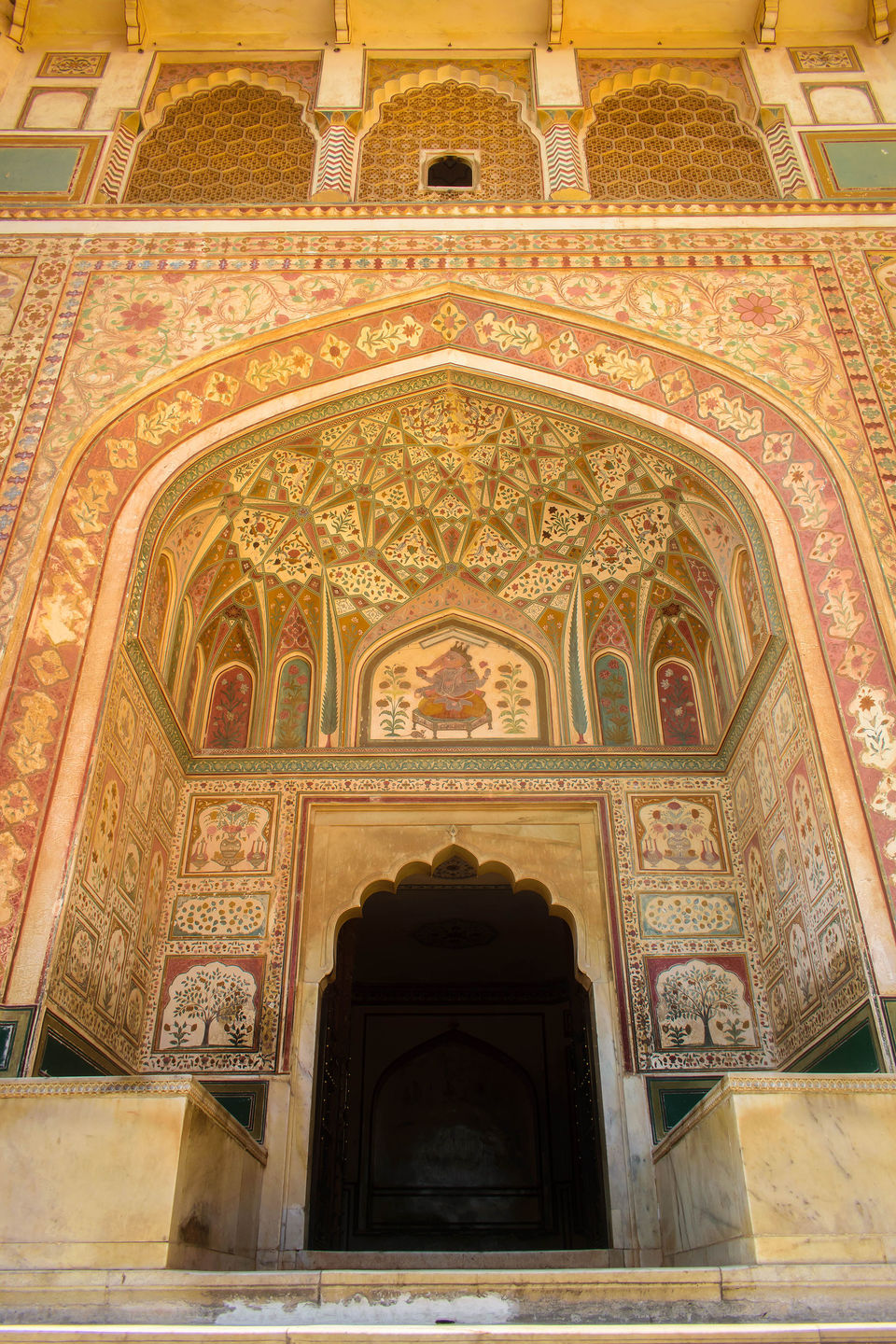

Sheesh Mahal

Amber Fort is lavishly ornamented and some its major attractions include the stunning Sheesh Mahal (Hall of Mirrors), Diwan-E-Aam (Hall of Public Audience), Diwan-E-Khas (Hall of Private Audience) and Sukh Niwas (Pleasure Palace). The fort has a peculiar style of architecture consisting of intricately carved lattice windows and finely sculpted pillars and gates.
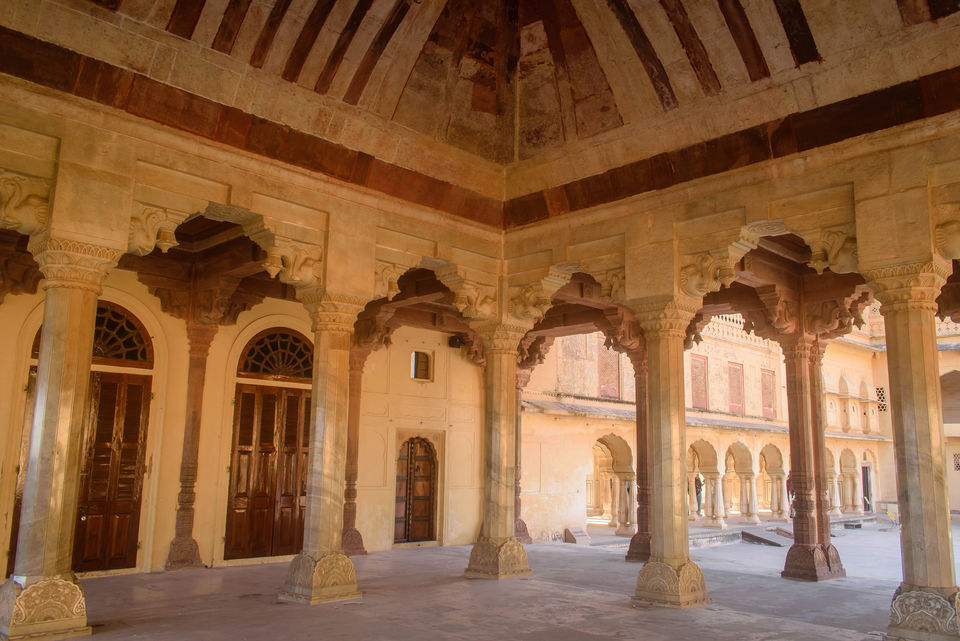
Diwan-E-Aam


Later, I headed towards the Panna Meena ka Kund (Stepwell) which lies only next to the massive fort. Many people are completely unaware of its existence as it hides under the shadow of Amber Fort and that explains why the stepwell had barely any visitors when I arrived. Stepwells are common in Rajasthan, it being a dry state. Panna Meena ka Kund was built for water storage so that the residents of Amer could use it for their daily chores. Relative to the more commonly known stepwells in Rajasthan, this one is small and square shaped with stairs on all four sides. It’s prohibited to climb down the stairs and isn’t particularly safe either.

It was already 1:30pm by the time I finished clicking photos at the stepwell and hoped on my motorcycle. Like I had mentioned earlier, I was exhausted already before reaching Jaipur. The situation hadn’t improved much and I was desperate to get back to the hotel. However, there were still a couple of attractions including the Jaigarh Fort, Nahargarh Fort and Gaitor ki Chhatriyan and I didn’t want to give all of them a miss.
A lucky draw ensued and Nahargarh Fort came out on top. It’s a 8km detour on the way back to the city. The fort built in 1734 was supposed to be defensive fortress but was never attacked. Nahargarh means ‘abode of tigers’ and the fort was earlier named Sudarshangarh. A legend says that the construction of the fort was obstructed by the spirit of a Rathore prince, Nahar Singh Bhomia. However, the spirit was pacified when a temple dedicated to him was built inside the fort. The fort is believed to be named after him.

Madhavendra Bhawan
A major attraction inside the fort is Madhavendra Bhawan built by Sawai Madho Singh. This is a two-storey building meant to house the king and his twelve queens. Other attractions include a wax museum and Sheesh Mahal, both of which were constructed recently and contribute a lot to the tourist footfall the fort receives. The entrance to the fort costs INR 50 and there is a separate ticket for the museum and Sheesh Mahal which costs INR 700. I only visited the Bhawan and it takes around an hour to complete its tour.

I returned to the hotel around 3pm and rested until evening post lunch. Although I had planned to visit the Jal Mahal in the late afternoon, I was too tired to again usher on a sightseeing tour. Couple other places I skipped include Jantar Mantar, Albert Hall Museum, Govind Devji Temple, Birla Mandir, Chokhi Dhani, Jawahar Circle Garden. Chokhi Dhani is a well-known tourist resort located on the outskirts of the old city. The aim of the resort is to give tourists an experience of the Rajasthani culture and cuisine, through its village setting and the cultural activities. The entry fee starts at INR 700 and the resort is open in the evening post 5pm. For those who are interested in shopping, Jaipur has a lot of old bazaars: Sireh Deodi bazaar, Johari bazaar, Nehru Bazaar, Bapu bazaar, Indira bazaar, Kishan Pol bazaar to name a few.
I only left the hotel in the evening on a food walk similar to the earlier day. I visited ‘Samrat ki Kachori’ which is located only about a 10min walk from the City Palace. Considering it had a 4+ rating on Google, I was curious to try their offerings. The place was crowded which helped me gain some confidence. I ordered ‘Kulhad Chai’, ‘Jalebi’ and ‘Pyaaz Kachori’ and all of them were absolutely delicious. Although the service was slow due to the crowd, it was worth the wait. Later I returned to the area I was staying in and treated myself to the ‘Kulhad Lassi’. I was in love with the Lassi and was having one whenever an opportunity arrived. I skipped dinner completely as I was already full and called it a day.
My last day in Rajasthan
Next morning, I woke up around 7am. I was planning to go on a photo-walk of the area around Hawa Mahal. I was certain I would find no tourists at this time of the day and I was so wrong! It’s said on the internet: ‘If you think you are good at something, there will always be an Asian who is better at it’. I found myself in a similar situation as there was a huge crowd of Chinese tourists clicking photographs outside the Hawa Mahal. I patiently waited for them to finish and set out on a photography spree myself. I also visited some nearby areas over the next two hours before returning to the hotel.




This was my last day in Jaipur and Rajasthan as I was supposed to reach Delhi by evening. Jaipur is a magical city indeed and its majestic history and culture evokes a sense of serenity. The people here are extremely welcoming and cheerful. When I was leaving the hotel, the manager even asked me to click his photograph with my motorcycle. He was surprised anyone could travel for two weeks on a motorcycle through Rajasthan.
I have already promised myself I would visit Rajasthan again, but with a more relaxed itinerary which would allow me to truly experience the state’s rich culture.







